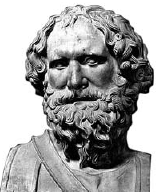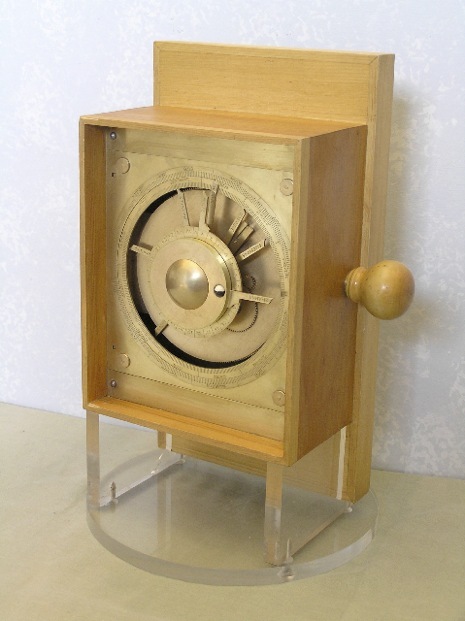The idea that lies behind this ancient computer is simple, namely to follow the cycles of the two celestial bodies that dictate the rhythm of life on Earth - the Sun and the Moon. Put in this way, everyone would think that this was not a very difficult task. The problem is that the rotation of the two celestial bodies in the sky, which sustains life on Earth, does not correspond to one astronomical year. Ancient Greeks knew that there were exactly 29.5 days from one new moon to another. Here is the problem, namely that one year has 354 days counted on the basis of the lunar cycle, which has 11 days less than the solar year that has 365 days. Thus, the so-called solar or natural year that determines the seasons differs from the lunar year. Greek astronomer Meton, who discovered that the two cycles coincide every 19 years, resolved this problem by calculating that 19 solar years equal 235 lunar months. Thus, it seemed that the problem was solved. This was so in purely mathematical terms but not from an engineering point of view.
A pure engineering mind.
As a good friend of mine, an engineer, used to say, after theorists do their job it is the engineers’ turn, as they have to figure out how to implement it in practice. The metal available to ancient engineers to make this mechanism was bronze. Making a wheel with 235 cogs that correspond to the 235 lunar months was not only a complicated task but it did not solve other problems faced by engineers, namely that the celestial bodies do not move in perfect circles and at the same speed. On the contrary, the Moon moves in an ellipse, and when it is close to Earth its movement accelerates and when it is away, it slows down. This means that, in order for ancient scientists to forecast the exact speed of the Moon, they had to find a way to accelerate the movement of the mechanism and slow it down so that it could be accurate. Of course, they coped with this task using a system of ingenious reporting mechanisms and arrows. It is believed that the first mechanisms were of much greater size but they were able to reduce their size over time and to fit them into a portable wooden box.
What was the function of the mechanisms?
We already mentioned the calculations relating to different games. They were probably made to determine every kind of periodical events the calculation of which, in terms of the optimal alignment of the celestial bodies, was essential for people in antiquity. In addition to the phases of the Sun and Moon, along with the correct forecasts of their eclipses, ancient scientists were interested in their colour too. We know that the red glow of the Moon (Blood Moon) occurs in certain circumstances. Ancient people wanted to know when it would happen as it was considered a bad omen and it was one of the reasons for the sinking of half of the Athenian fleet at Syracuse in 413 BC. Nicias, who led the Athenian fleet, perceived the red moon as a bad omen and that weakened the determination of the Athenian warriors. If the navy had such a device, probably the events would have taken place in another way, avoiding the siege during the "Blood Moon."
Origin of the Antikythera Mechanism.
 Posidonius
Posidonius
One hypothesis is that it was constructed in the academy of ancient Stoic philosopher Posidonius of Rhodes, which was considered a centre of astronomical science and engineering at that time. The linguistic analysis of the inscriptions found during the latest scanning of the mechanism suggests that it was probably made in the colony of Corinth on the island of Sicily, which directly refers to one of antiquity’s indisputably greatest minds, Archimedes.
 Archimedes
Archimedes
Probably the great scientist was not directly involved in its development, shouting "Eureka" in inventing it, since he died more than 60 years before the appearance of the mechanism that dates back to 150 BC and 100 BC.

The modern reconstruction of the mechanism carried out by one person without the intervention of modern machines shows that it takes more than 1,000 hours to make such a mechanism. The reconstruction used mainly tools that were known in antiquity but there were some exceptions, including a vice and watchmaker’s glasses. All this shows that the making of a single mechanism required great patience, persistence and work. The question that remains is why other similar mechanisms that appeared only after more than 1,300 years have not been found.